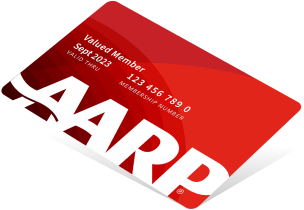AARP Hearing Center

When my wife and I came home to the States after 10 years of working in Japan, the thing we missed most was the unpasteurized sake. It’s called Nama sake, and it just feels alive, the way kombucha does. But it’s difficult to find Nama sake here because it cannot be shipped from Japan — it needs to stay refrigerated. And there was no one selling it in the Bay Area. So we started brewing it ourselves, in our garage. During my career, I’d started 10 companies, so opening a sake brewery seemed like a natural next step. And I’d grown up in a family that did its own canning, so I understood fermentation.
My biggest fear was, how do I, as a non-Japanese person, go into Japanese restaurants and tell them, “You should buy my sake”? It took me three years to make my first sale to a Japanese restaurant. The owner told me, “I always liked your sake, but I wasn’t sure you were going to stick with this.” But I guess we have. Our daughter, Olivia, was just finishing high school when we began brewing sake; now she’s 28 and running the brewery with us.
We’re working and sweating, but I’m enjoying myself. The reward is creating something you can taste and share, and that brings people together. We have customers of all ages, but young adults are our primary market. This next generation is drinking cleaner beverages.
Back when I worked in computer software, clients were always asking, “Why is this taking so long? Why is this bug still here?” With sake, the process just takes as long as it takes. We’re not making widgets, we’re making art.
Jake Myrick, 63, worked as an IT specialist for 25 years before founding Sequoia Sake in San Francisco with his wife, Noriko Kamei, 59.
Los Angeles–based photographer Gregg Segal has contributed to Time, Smithsonian, Fortune, Wired and National Geographic Adventure, among other publications.




























































You Might Also Like
AARP’s Debra Whitman Shares Tips for Second Half of Life
Economist dives into living longer, maintaining a sense of purpose, increasing financial security and moreThe Life-Changing Impact of Treating Hearing Loss
How cochlear implants helped one man finally hear againA Cut Above: Barber Provides a Safe Space for People With Special Needs
Billy Dinnerstein caters to clients who have a hard time getting haircutsRecommended for You